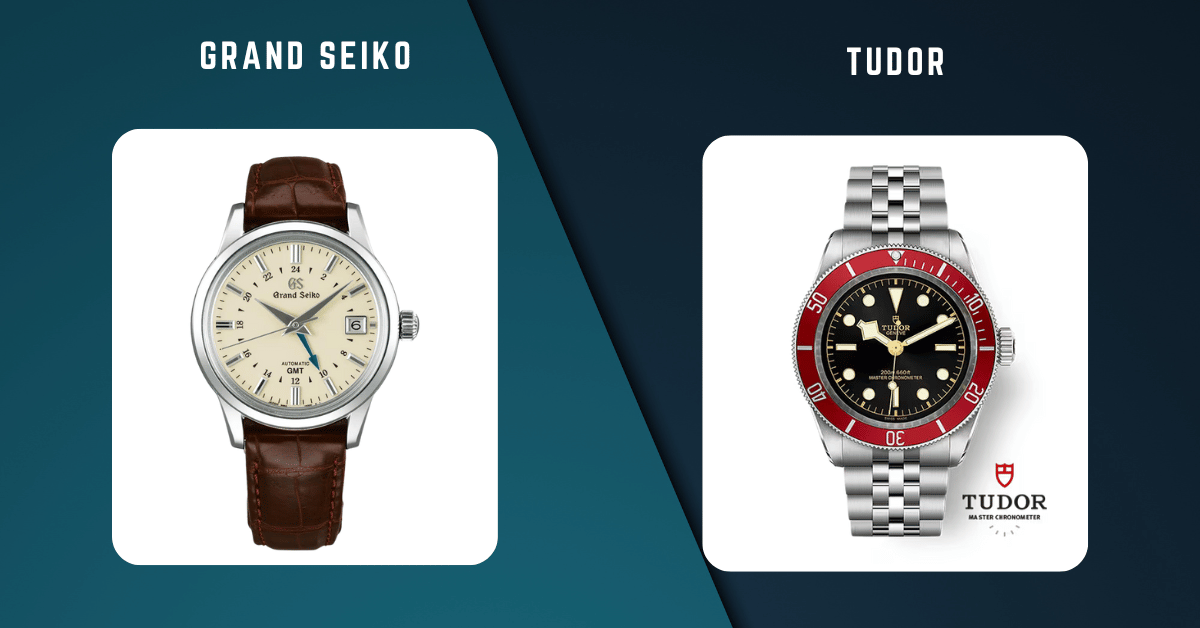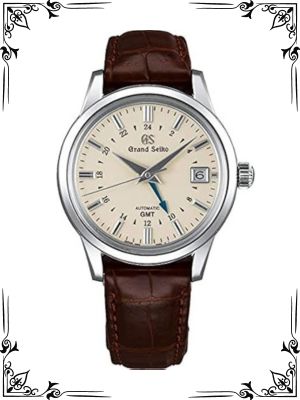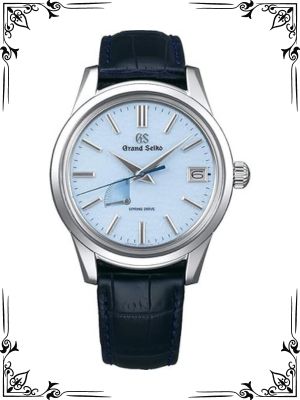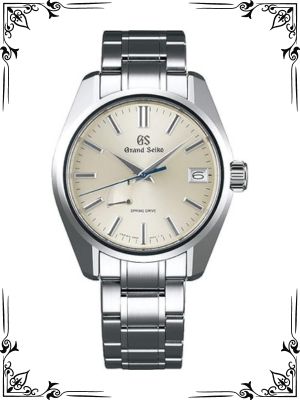Welcome, watch aficionado! Today, we delve into the world of two formidable contenders in the luxury watch market – Grand Seiko and Tudor. Both brands offer exceptional quality, captivating aesthetics, and a rich history.
But which brand reigns supreme for your next timepiece? Worry not, for by the end of this in-depth comparison, you’ll be well-equipped to choose the champion that best reflects your style and horological preferences.
A Look Back at Grand Seiko and Tudor’s Legacy
Before diving into the technical specifications, let’s appreciate the unique stories that Grand Seiko and Tudor bring to the table.
Grand Seiko: Born in 1960s Japan, Grand Seiko emerged as a challenger to Swiss dominance in the watchmaking industry. Their focus on innovation and precision watchmaking resulted in movements rivaling, and even surpassing, their Swiss counterparts in certain aspects.
Grand Seiko is renowned for its dedication to craftsmanship, exemplified by its unique Spring Drive technology – a revolutionary hybrid movement combining the elegance of a mechanical watch with the accuracy of quartz.
Tudor: Established in 1946 by Rolex founder Hans Wilsdorf, Tudor was initially positioned as an affordable alternative to Rolex.
Tudor watches were known for their robust construction and sporty aesthetics, often drawing inspiration from Rolex designs. Over the years, Tudor has carved its own distinct identity, offering high-quality tool watches at a more accessible price point compared to Rolex.
Under the Hood: A Technical Breakdown
Let’s equip ourselves with the knowledge to navigate the technical specifications of Grand Seiko and Tudor timepieces. Here’s a close examination of their core functionalities:
Movement:
Grand Seiko: Grand Seiko offers a range of movements, including their proprietary Spring Drive technology. Spring Drive combines a traditional mainspring with a quartz regulator, resulting in a smooth sweeping second hand and exceptional accuracy. Grand Seiko also utilizes high-grade, in-house automatic and manual-winding mechanical movements known for their precision and reliability.
Tudor: Tudor primarily utilizes modified ETA or Sellita movements, known for their robustness and affordability. In recent years, Tudor has begun introducing in-house movements in some of their higher-end models, showcasing their commitment to innovation.
Here’s a table summarizing the key movement aspects:
| Feature | Grand Seiko | Tudor |
|---|---|---|
| Movement Options | Spring Drive, In-house automatic/manual-winding mechanical | Modified ETA/Sellita movements, In-house movements (in some models) |
| Notable Features (Grand Seiko) | Smooth sweeping second hand, High accuracy | |
| Notable Features (Tudor) | Robustness, Affordability |
Materials and Construction:
Both Grand Seiko and Tudor prioritize high-quality materials in their watches. They predominantly utilize 316L stainless steel for their cases and bracelets, ensuring durability and corrosion resistance. Some Grand Seiko models might incorporate high-end materials like titanium or precious metals for a more luxurious feel.
Both brands offer exceptional attention to detail in their finishing. Grand Seiko is renowned for its Zaratsu polishing technique, resulting in a mirror-like finish on their cases. Tudor watches boast well-finished cases and bracelets, offering a robust and sporty aesthetic.
Here’s a table summarizing the key materials and construction aspects:
| Feature | Grand Seiko | Tudor |
|---|---|---|
| Case Material | Primarily 316L stainless steel (some models with high-end options) | Primarily 316L stainless steel |
| Bracelet Material | Primarily 316L stainless steel | Primarily 316L stainless steel |
| Finishing | Zaratsu polishing (known for exceptional detail) | High-quality finishing |
Functions and Features:
Grand Seiko: Grand Seiko offers a diverse range of timepieces, catering to various needs. Their dress watches typically feature classic three-hand layouts with date complications. Their sports watches might incorporate additional functions like chronographs, GMT functionality, and diving bezels.
The unique selling point of Grand Seiko remains the Spring Drive technology, offering a superior level of accuracy and a smooth sweeping second hand.
Tudor: Tudor focuses on tool watches known for their functionality and durability. Their signature Black Bay line, for example, is inspired by vintage dive watches and features excellent water resistance, robust construction, and clear legibility. Tudor also offers chronographs and GMT watches for those seeking additional complications.
Here’s a table summarizing the key functions and features aspects:
| Feature | Grand Seiko | Tudor |
|---|---|---|
| Focus | Diverse range (dress, sports) | Tool |
A Matter of Style: Design and Aesthetics
While both Grand Seiko and Tudor prioritize quality, their design philosophies differ, catering to distinct tastes:
Dial Design:
Grand Seiko: Grand Seiko dials are known for their elegance and meticulous detailing. They often utilize high-quality materials like mother-of-pearl or intricate textured dials. Their hands and hour markers are typically sharp and well-defined, ensuring excellent legibility. Some Grand Seiko models might incorporate a power reserve indicator or a date window for added functionality.
Tudor: Tudor dials prioritize functionality and clarity. Their tool watches often feature large, luminous hour markers and hands for optimal legibility in low-light conditions. Color options might be bolder, with pops of red, blue, or green on certain models. Tudor dials typically maintain a clean and straightforward aesthetic, focusing on essential information for the wearer.
Here’s a table summarizing the key dial design aspects:
| Feature | Grand Seiko | Tudor |
|---|---|---|
| Overall Aesthetic | Elegant, detailed | Functional, clear |
| Material Options | Mother-of-pearl, textured dials (common) | Simpler materials |
| Hand and Marker Style | Sharp, well-defined | Large, luminous |
| Additional Features | Power reserve indicator (on some models), date window (common) | Simpler, focusing on essential information |
Case and Bracelet:
Grand Seiko: Grand Seiko cases are known for their sharp lines and exceptional polishing. They offer a variety of case sizes to cater to different wrist sizes and preferences. Their bracelets are typically well-crafted and comfortable to wear, though some might prioritize aesthetics over ultimate sportiness.
Tudor: Tudor cases prioritize robustness and functionality. Their tool watches often feature thicker cases with pronounced crowns and guards for added protection. Tudor bracelets are known for their durability and comfortable wear, often utilizing a sporty three-link design.
Here’s a table summarizing the key case and bracelet aspects:
| Feature | Grand Seiko | Tudor |
|---|---|---|
| Case Design | Sharp lines, exceptional polishing | Robust, functional |
| Case Size Range | Varied | Primarily sports watch sizes |
| Bracelet Style | Well-crafted, may prioritize aesthetics over ultimate sportiness | Durable, comfortable, sporty three-link design (common) |
Brand Image:
Grand Seiko: Grand Seiko cultivates an image of innovation, precision, and dedication to craftsmanship. Owning a Grand Seiko signifies an appreciation for the finer details of watchmaking and a uniquely Japanese aesthetic.
Tudor: Tudor embodies a sporty, adventurous spirit. Their watches are known for their reliability, functionality, and association with historical tool watches. Owning a Tudor signifies a preference for a robust timepiece that can handle anything you throw at it.
User Feedback: Voices from the Watch Community
When making a decision, it’s valuable to consider real-world experiences. Here’s a glimpse into what watch enthusiasts appreciate about each brand:
Grand Seiko: Owners often praise the exceptional finishing, smooth Spring Drive movement, and unique design aesthetic. However, some might find the pricing on par with established Swiss brands and the size of certain models less versatile.
Tudor: Tudor is lauded for its excellent value proposition, robust construction, and rich history. Some wearers might miss the prestige associated with established Swiss brands or prefer a more refined finish compared to some Grand Seiko models.
Common Problems: Potential Concerns
While both brands are known for their quality, it’s always wise to consider potential drawbacks:
Grand Seiko: Since some Grand Seiko models utilize the Spring Drive technology, servicing might be more expensive compared to a standard mechanical movement. Additionally, the size of some Grand Seiko models might not suit all wrist sizes.
Tudor: The primary concern with Tudor might be the use of modified movements in some models, which some enthusiasts might perceive as less prestigious compared to in-house movements. Additionally, the brand image might not hold the same level of recognition as established Swiss luxury brands.
The Final Lap: Choosing Your Champion
With a comprehensive understanding of Grand Seiko and Tudor, you’re well-equipped to make an informed decision:
Choose Grand Seiko if:
- You prioritize innovation and precision, particularly with the Spring Drive technology.
- You appreciate an elegant and meticulously detailed aesthetic.
- You value a unique Japanese watchmaking experience.
- Your wrist size can accommodate the range of Grand Seiko case sizes.
Choose Tudor if:
- You seek a robust and functional tool watch at an excellent value.
- You appreciate a sporty and adventurous aesthetic.
- The heritage and history of Tudor resonate with you.
- You prioritize a brand with a strong value proposition and a more accessible price point compared to some Grand Seiko models.
- You prefer a widely recognized brand within the watch community, even if it doesn’t hold the same prestige as some established Swiss luxury names.
Conclusion: A Timepiece for Your Journey
Ultimately, the choice between Grand Seiko and Tudor boils down to personal preference and your watch-collecting goals. Here’s a final breakdown to solidify your decision:
- The Innovative Aficionado (Grand Seiko): A captivating blend of cutting-edge technology, meticulous craftsmanship, and a unique Japanese aesthetic.
- The Value-Conscious Adventurer (Tudor): A robust and reliable timepiece with a rich history, offering exceptional value for its features and functionality.
Beyond the Specs: Remember, a watch isn’t just a technical marvel; it’s a reflection of your personality and style. Consider how a Grand Seiko or Tudor aligns with your image and the message you want to convey when you wear it.
The Final Word: Visit authorized retailers for both brands to experience their timepieces firsthand. Try them on, feel the weight, and witness the craftsmanship. With the knowledge you’ve gained here, you’re well on your way to selecting the perfect watch to accompany you on your next adventure, big or small. Happy hunting!




